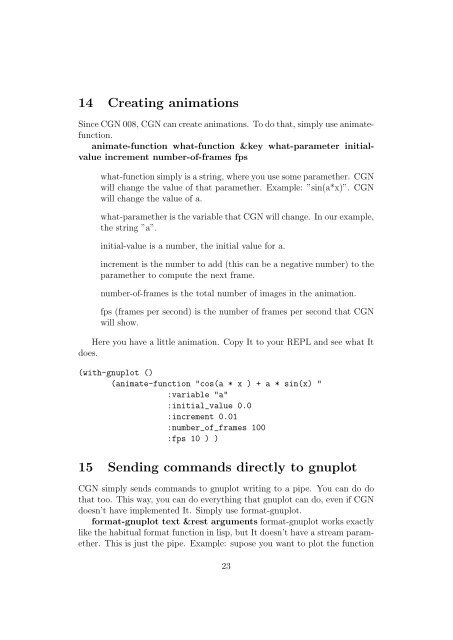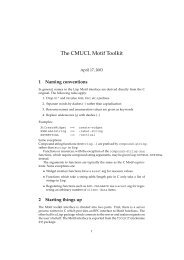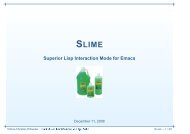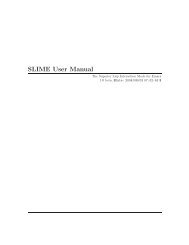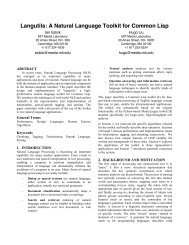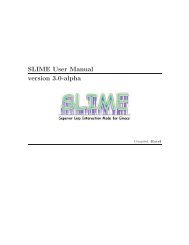CGN User Manual - Common Lisp.net
CGN User Manual - Common Lisp.net
CGN User Manual - Common Lisp.net
- No tags were found...
Create successful ePaper yourself
Turn your PDF publications into a flip-book with our unique Google optimized e-Paper software.
14 Creating animationsSince <strong>CGN</strong> 008, <strong>CGN</strong> can create animations. To do that, simply use animatefunction.animate-function what-function &key what-parameter initialvalueincrement number-of-frames fpswhat-function simply is a string, where you use some paramether. <strong>CGN</strong>will change the value of that paramether. Example: ”sin(a*x)”. <strong>CGN</strong>will change the value of a.what-paramether is the variable that <strong>CGN</strong> will change. In our example,the string ”a”.initial-value is a number, the initial value for a.increment is the number to add (this can be a negative number) to theparamether to compute the next frame.number-of-frames is the total number of images in the animation.fps (frames per second) is the number of frames per second that <strong>CGN</strong>will show.Here you have a little animation. Copy It to your REPL and see what Itdoes.(with-gnuplot ()(animate-function "cos(a * x ) + a * sin(x) ":variable "a":initial_value 0.0:increment 0.01:number_of_frames 100:fps 10 ) )15 Sending commands directly to gnuplot<strong>CGN</strong> simply sends commands to gnuplot writing to a pipe. You can do dothat too. This way, you can do everything that gnuplot can do, even if <strong>CGN</strong>doesn’t have implemented It. Simply use format-gnuplot.format-gnuplot text &rest arguments format-gnuplot works exactlylike the habitual format function in lisp, but It doesn’t have a stream paramether.This is just the pipe. Example: supose you want to plot the function23


